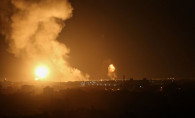Insect apocalypse threatens humans, other species: Study warns
Insect apocalypse threatens humans, other species: Study warns
The future of mankind is being threatened as a result of the decline of insect communities, which are considered a vital factor in agricultural pollination necessary for the continuation of human life, scientists at James Cook University warned in an international study investigating the future of insects in different climate change scenarios.
Co-author of the study William Laurance said that declines in insects were pinpointed in several places around the globe and became dubbed in media as an “insect apocalypse” due to climate change and the increase of global temperature, the University said in a statement on the study on October 25.
“The loss of insects works its way up the food chain, and may already be playing an important role in the widespread decline of their consumers, such as insect-eating birds in temperate environments,” Laurance said, noting that the temperature of the earth has risen by 1.1°C since the industrial revolution in the early 19th century. He added that the globe’s temperature is expected to increase 2-5°C by 2100 in case no action is taken regarding the reduction of greenhouse gas emissions.
Laurance also attributed the habitat loss of the insect world to human practices such as “chemical or organic pollution” to the soil. He called for taking action and providing the required funding to protect insect communities.
Middle Eastern countries like Egypt and Morocco have experienced Colony Collapse Disorder (CCD), when the number of bee workers in a hive declines or disappears, due to climate change-related impacts such as fluctuating weather temperatures, poor rains, and forest fires, in addition to other harmful factors from humans like the use of pesticides.
In a study published in the Biological Conservation journal in April 2019, 40 percent of insect species are vulnerable to extinction over the coming few decades. The most affected species are Lepidoptera, Hymenoptera, and dung beetles (Coleoptera).







